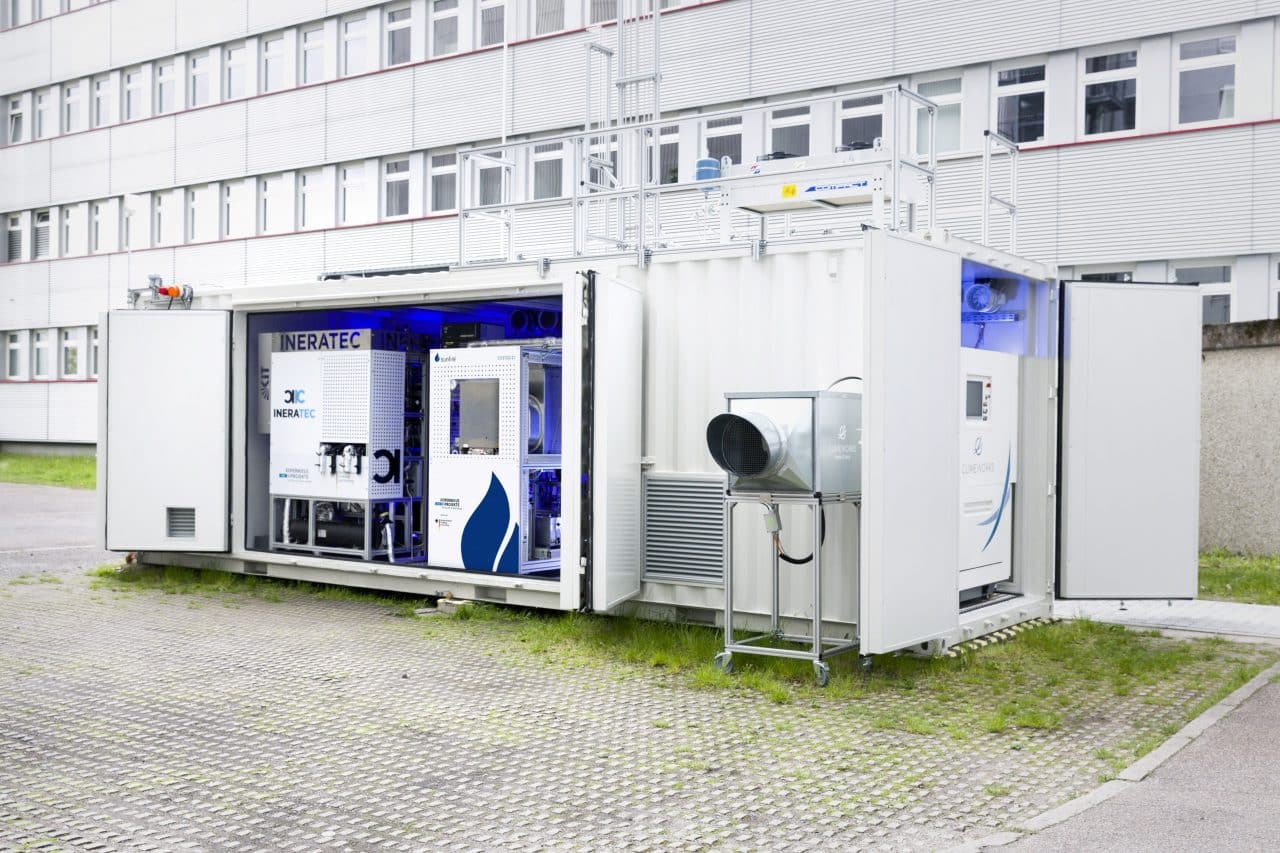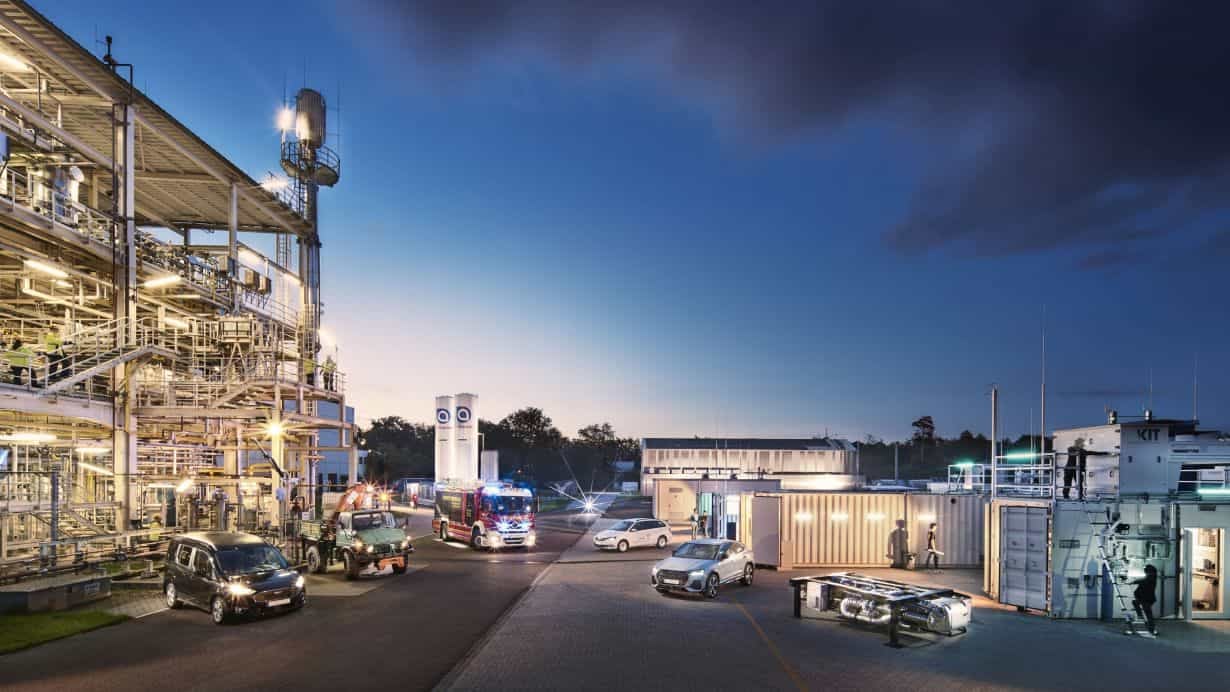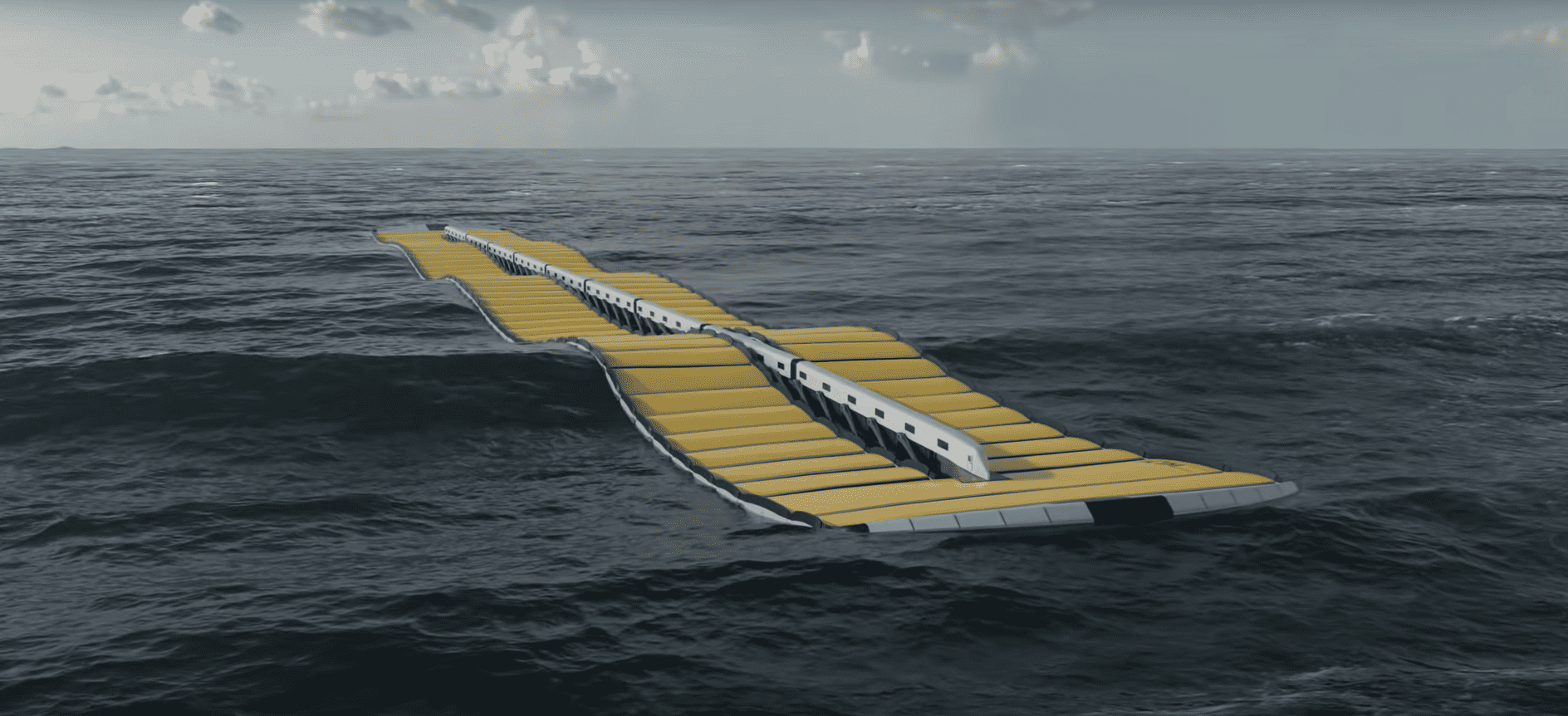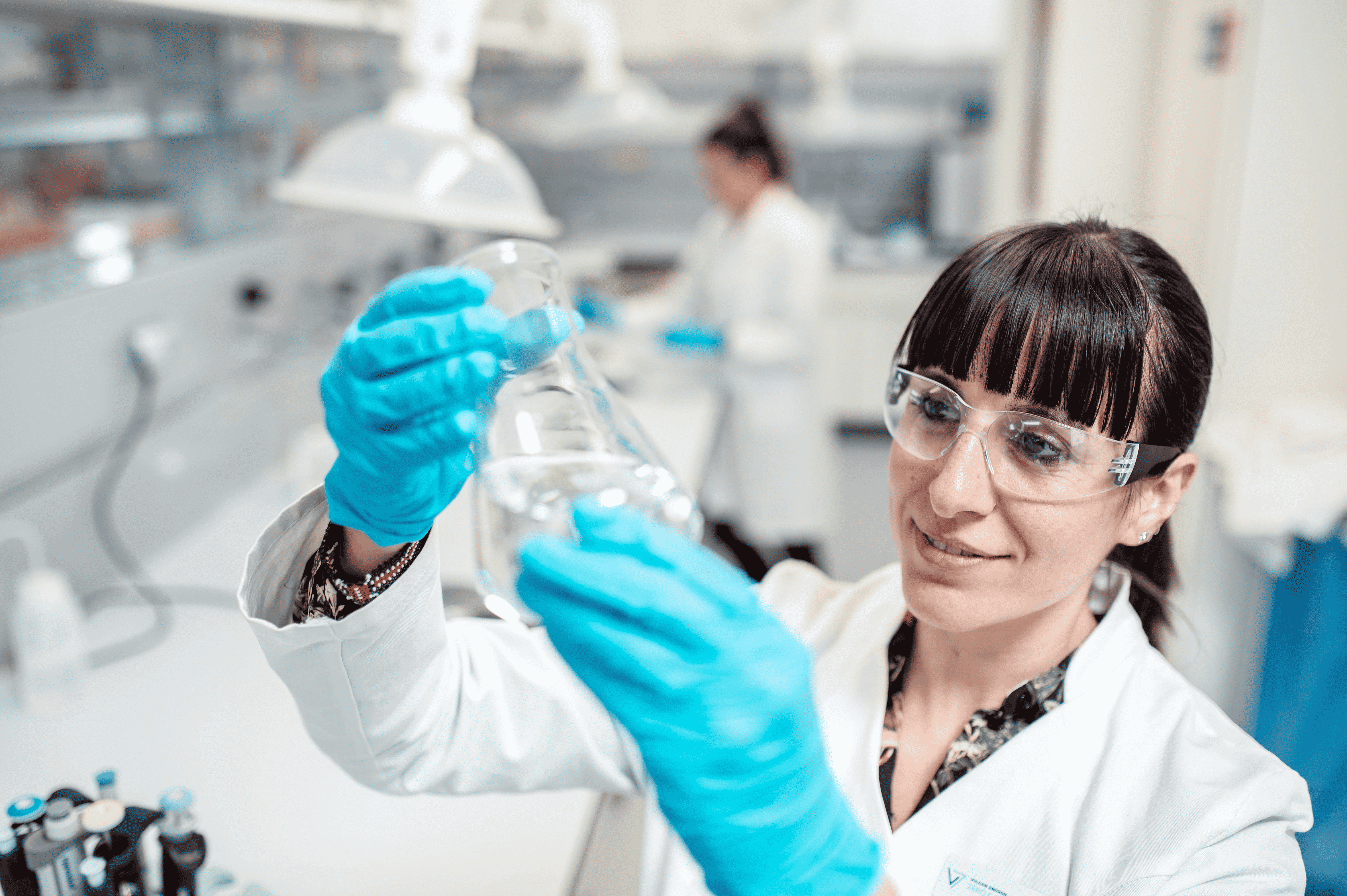
This is how successful sector collaborations works: research partners from the Kopernikus-Projektes P2X recently produced the first liters of fuel from carbon dioxide from air, water and green electricity on the premises of the Karlsruhe Institute of Technology (KIT). For the first time, they combined all four requisite chemical process steps in their compact pilot plant into a single continuous process. The four German-speaking research partners Climeworks, Sunfire, Ineratec achieved thereby the maximum utilization of carbon dioxide along with a particularly high level of energy efficiency. Especially as the material and energy cycles are recycled internally.
The existing pilot plant can produce around ten liters of fuel per day. A plant capable of 200 liters per day will soon be developed as part of the second phase of the Kopernikus P2X project. After that, a semi-industrial pilot plant will be built with a production capacity of 1500 to 2000 liters per day. This would theoretically make it possible to achieve efficiency levels of around 60 percent. This means that 60 percent of the green electricity that is used could be stored as chemical energy in fuel.
Just 4 steps to fuel
In the first step, the plant extracts carbon dioxide from the surrounding air in a cyclic process. The Direct Air Capture technology from Climeworks, a spin-off from ETH Zurich, uses a specially treated filter material for this purpose. The filters, through which the air flows, absorb carbon dioxide molecules like a sponge. Under a vacuum and at 95 degrees Celsius, the adsorbed carbon dioxide separates from the surface again and is pumped out.
In the second step, carbon dioxide and water vapor are simultaneously split by electrolysis. Developed by the technology company Sunfire, this so-called co-electrolysis process produces hydrogen and carbon monoxide in a one-step process. In other words, they produce a synthetic gas that forms the basis for a variety of processes used in the chemical industry. With its high level of efficiency on an industrial scale, co-electrolysis can chemically bind 80 percent of all of the green electricity used in the synthetic gas.
In the third step, long chain hydrocarbon molecules are formed out of the synthetic gas using the Fischer-Tropsch process, the raw products for fuels. Ineratec, a spin-off from KIT, is supplying a micro-structured reactor that offers a large surface area in a very small space in order to reliably dissipate heat from the process and use it for other steps in the process. In this way, the process can easily be controlled, is able to cope well with alternating loads and is expandable in a modular way.
Finally, the fourth step optimizes fuel quality and the yield. KIT has integrated this sub-process, known as hydrocracking, into the process chain. In a hydrogen atmosphere, the long hydrocarbon chains are partially broken down in the presence of a zeolite-platinum catalyst. They thereby change the product range towards more usable fuels such as gasoline, kerosene and diesel.
On-site energy generation
This process offers enormous potential, especially in view of its modular character. Due to the low risk associated with scalability, the threshold for implementation is significantly lower than that of a large-scale central chemical plant. The process can be installed in a decentralized manner and can therefore be used where solar, wind or water power is readily available.
Until now, the electricity, heat, mobility and industry sectors have been studied independently. And at a time when the focus is on renewable energies, there is a need to rethink our approach so that their potential are able to be optimally exploited.
“Wind and the sun are providing us with sufficient amounts of energy worldwide, but not always at the right time,” says Professor Roland Dittmeyer of KIT, coordinator of the research cluster “Hydrocarbons and long-chain alcohols” within the Kopernikus Project Power-to-X (P2X), when describing the dilemma surrounding the energy turnaround. “In addition, some important transport sectors such as air traffic control and heavy goods traffic also require fuels over the long term because they have a high energy density. It therefore makes sense to store the previously unused green electricity in chemical energy sources.
Kopernikus Project Power-to-X (P2X)
“Power-to-X” refers to technologies which convert electricity from renewable sources into material energy reservoirs, energy sources and energy-intensive chemical products. This means that renewable energies is able to be used in the form of customized fuels for motor vehicles or in improved plastics and chemical products with a high level of added value.
As part of the German government’s Kopernikus Program, a national research platform was set up for this complex issue in the form of the “Power-to-X” (P2X) project. A total of 18 research institutes, 27 industrial companies and three civil society organizations are involved in P2X. The aim is to bring new technological developments to industrial maturity within ten years. The first funding phase will focus on research into the entire value chain from electrical energy to material energy sources and products.
These articles may also be of interest to you:
SUN-to-LIQUID: How sunlight is turned into kerosene
Crowd oil: Fuel from the Air Conditioning System
RENEWABLE ENERGY: ELECTRICITY BECOMES GAS







